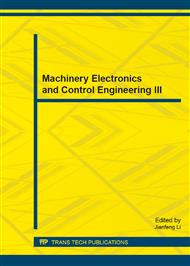p.514
p.518
p.522
p.526
p.530
p.534
p.543
p.548
p.552
A Predictor of How Many Books a University Library will Purchase Using Regression Control
Abstract:
A library should select new books in accordance with a rational principle, which make it necessary to construct a prediction model for buying books. The paper provides a reasonable criterion to conduct university library to construct an efficient collection. The change of library lending depends on the change of the number of readers and on the change of the books that a library possesses. The author has investigated library lending and the number of readers of a university library in China for 18 school years and finds that the sample data fit the simple linear regression model. Then the prediction equation and the prediction value of library lending in the school year 2012-2013 is obtained. The author has observed library lending and the library collection for 11 school years and finds that the sample data fit the regression model.. Then Based on the control theory of the regression analysis, the control equation and the control value of the collection in the school year 2012-2013 is obtained according to the prediction value of library lending. The control value of the collection minus the observed value of the collection in last school year 2011-2012 is the library demand for new books in the school year 2012-2013.
Info:
Periodical:
Pages:
530-533
Citation:
Online since:
December 2013
Authors:
Price:
Сopyright:
© 2014 Trans Tech Publications Ltd. All Rights Reserved
Share:
Citation:


